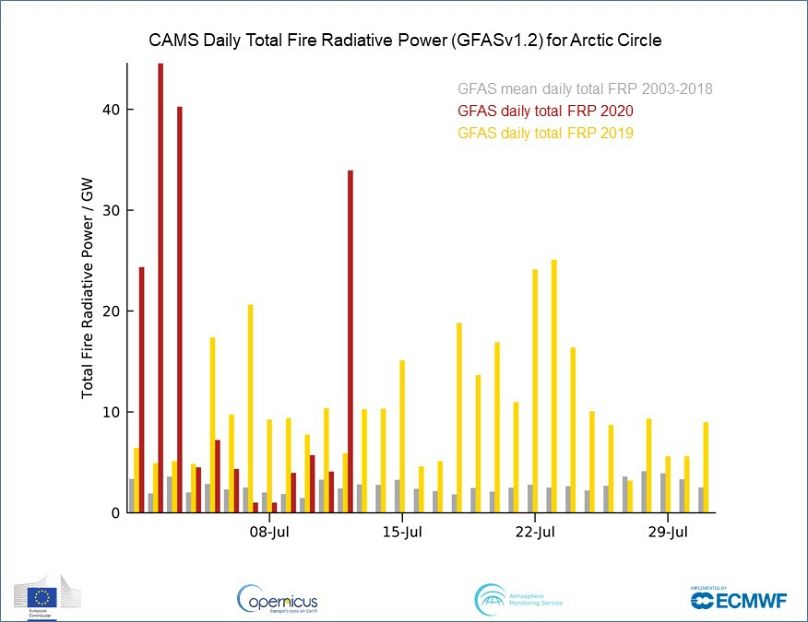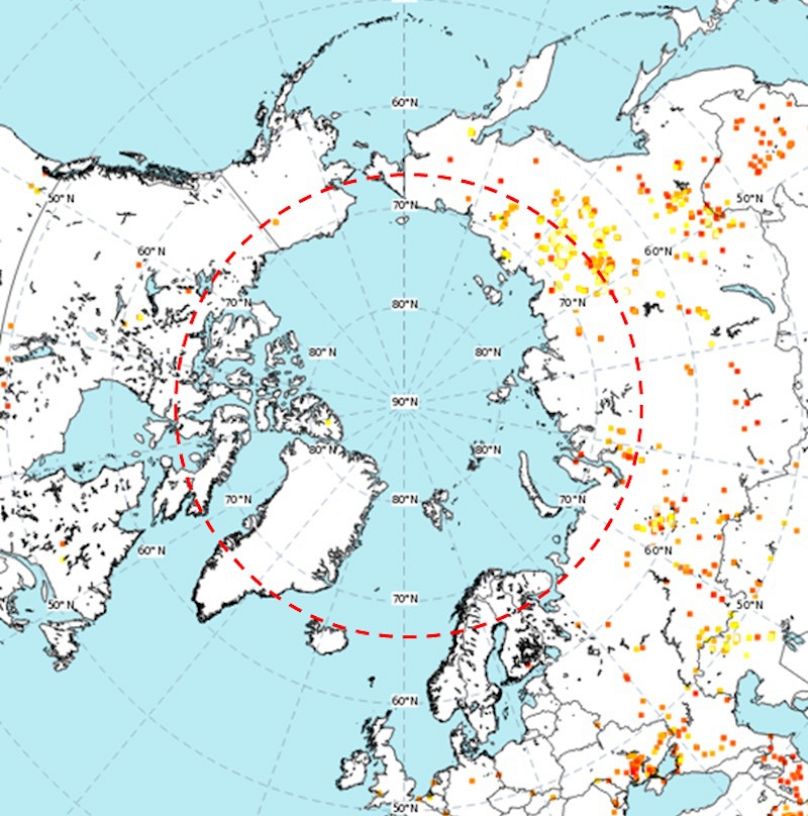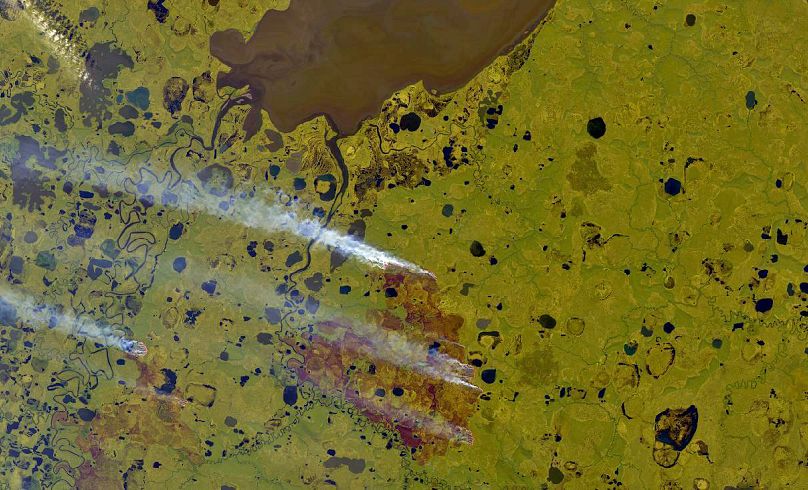Fuelled by record high temperatures in the Arctic region, fires are currently burning an area of land the size of Luxembourg.
The unusually high temperatures that have plagued Siberia since the start of the year, along with a lack of rain, has intensified wildfires, which in recent days have multiplied from 159 outbreaks to around 300.
Fuelled by record high temperatures in the region, the fires are currently burning on an area of land the size of Luxembourg, or 333,000 hectares. Greenpeace said earlier this summer the blazes were covering an area of some 3 million hectares.
After a week where the fires had calmed down, outbreaks multiplied again over the weekend, according to data from the European Union’s Copernicus Atmosphere Monitoring Service (CAMS).
This graph shows in red the radiation emitting from the fires in the Polar Arctic Circle this year, and in yellow, the much lower amounts from 2019. In grey, the historical mean.
The chief scientist of CAMS has also shared a graph showing the location of the fires, which appear to be concentrated in Siberia.
Explosives and cloud seeding used to fight fires in remote regions
As in the past, Russian firefighters are unable to attempt to extinguish all the fires in the remote parts of this vast region. Besides using explosives to try to contain the flames, the Aerial Forest Protection Service of Russia said it was trying to create rain using the cloud seeding technique.
Often the only witnesses to the flames in the most remote regions are satellites, which can gather images of the outbreaks.
Swathes of Siberia have been experiencing abnormally high temperatures for some time and combined with dry soil, new fires are breaking out. This follows devastating fires in the region last summer, according to CAMS.
Since mid-June, both the number and intensity of fires have increased in the extreme northeast of Siberia and, to a lesser extent, in Alaska, causing the emission of 59 megatons of CO2 into the atmosphere, a record for this month since measurements began in 2003 - and equivalent to the annual emissions of countries such as Peru.
Record heat and melting in the Arctic Ocean
The extreme north and beyond the Arctic Circle has this year registered record temperatures. On June 20, the meteorological service of Russia recorded a peak of 38°C in Verkhoyansk, the highest recorded temperature since records began in the late nineteenth century.
This is contributing to the rapid melting of permafrost, the region’s frozen ground, on which are built many industrial construction sites and buildings, many for mining hydrocarbons.
A massive oil spill in Norilsk in Siberia this year was believed to have been caused by this melting - a melting that has now reached record levels for this time of year, according to climatologist Zackary E Labe.
The melting of the poles that act as temperature controls for atmospheric currents has consequences for the entire climate.
This year, however, the ice platform in Greenland has so far avoided catastrophic losses, with less ice melting than the year before.















